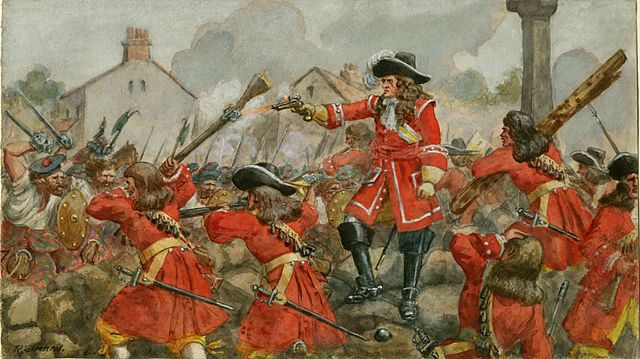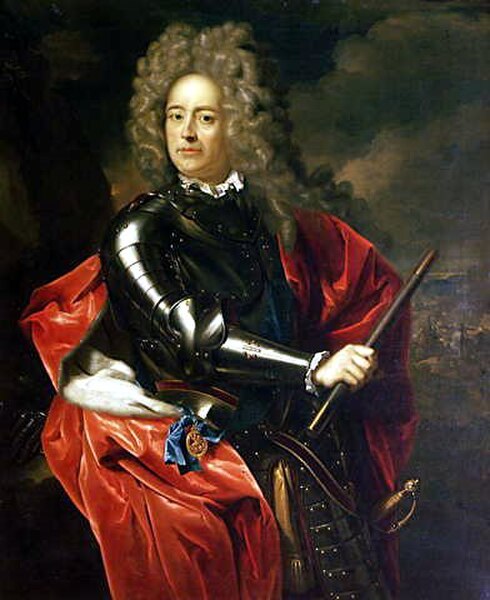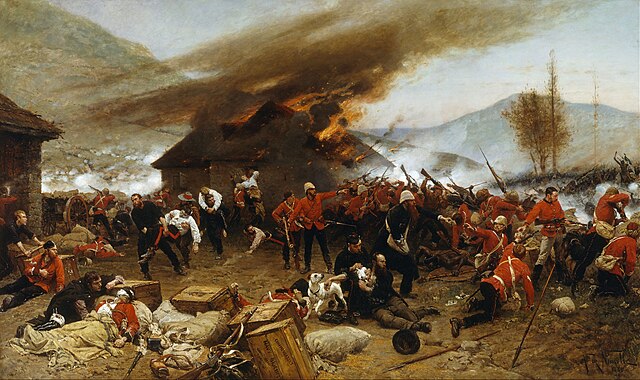The Scots Army was the army of the Kingdom of Scotland between the Restoration in 1660 and the Acts of Union of 1707. A small standing army was established at the Restoration, which was mainly engaged in opposing Covenanter rebellions and guerrilla warfare pursued by the Cameronians in the East. There were also attempts to found a larger militia. By the Glorious Revolution in 1688–89 the standing army was over 3,500 men. Several new regiments were raised to defend the new regime and, although some were soon disbanded several took part in William II's continental wars. By the time of the Act of Union in 1707, the army had seven units of infantry, two of horse and one troop of Horse Guards. Early units wore grey, but adopted red like the English army after 1684. New Scottish and particularly Highland regiments would be raised from the 1740s, some of which had a long history within the army.
Late 17th-century dragoon of the Scots Greys.
Scottish infantry engaging Jacobites at the Battle of Dunkeld, 1689.
The British Army is the principal land warfare force of the United Kingdom, British Overseas Territories and Crown Dependencies, a part of the British Armed Forces along with the Naval Service and the Royal Air Force. As of 1 January 2024, the British Army comprises 75,166 regular full-time personnel, 4,062 Gurkhas, 26,244 volunteer reserve personnel and 4,557 "other personnel", for a total of 110,029.
Lord Protector Oliver Cromwell
Lord General Thomas Fairfax, the first commander of the New Model Army
John Churchill, 1st Duke of Marlborough, was one of the first generals in the new British Army and fought in the War of the Spanish Succession. He was a noted ancestor of Sir Winston S. Churchill, later famous Prime Minister during World War II.
In the 1879 Battle of Rorke's Drift, a small British force repelled an attack by overwhelming Zulu forces; eleven Victoria Crosses were awarded for its defence.






